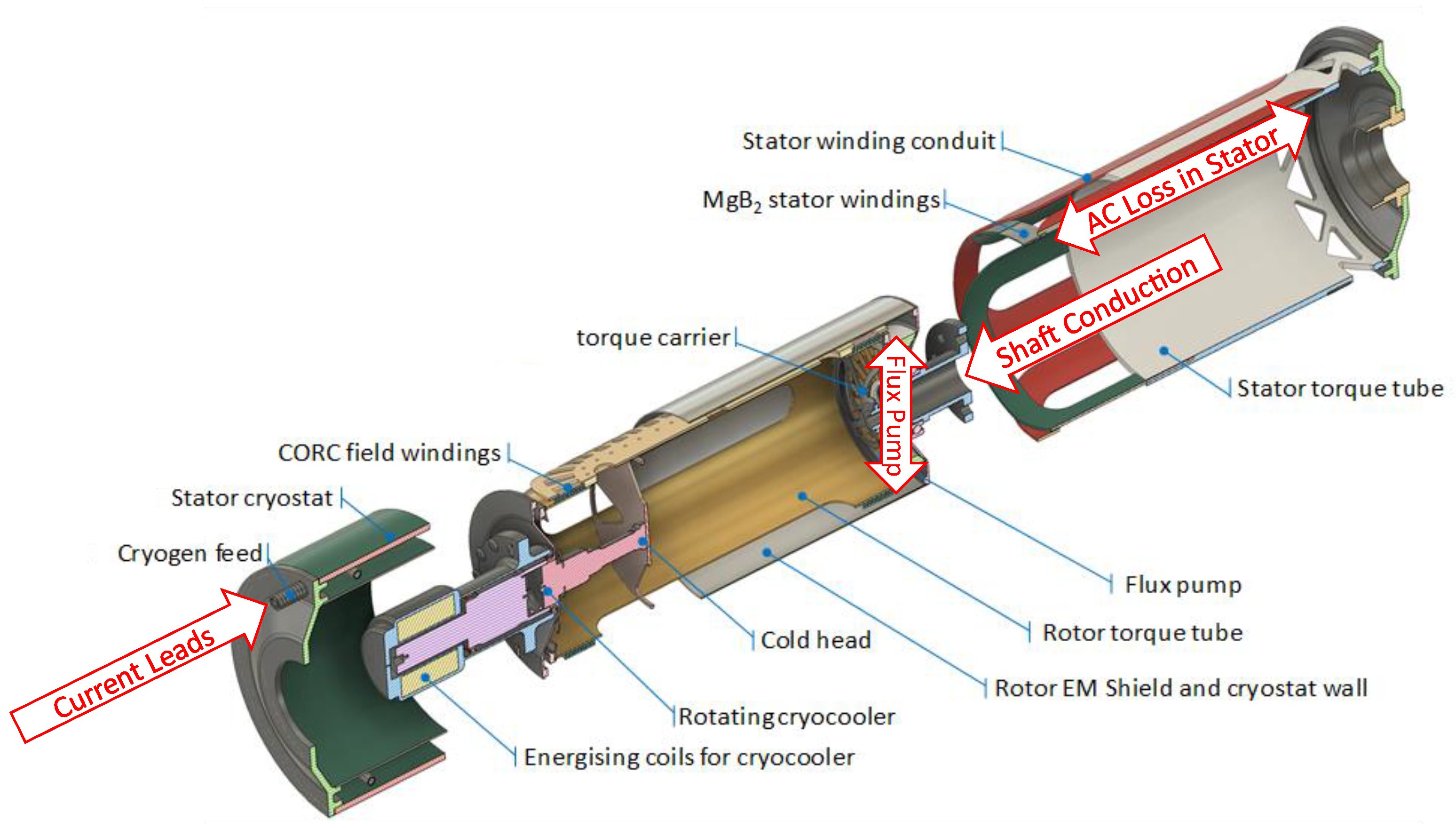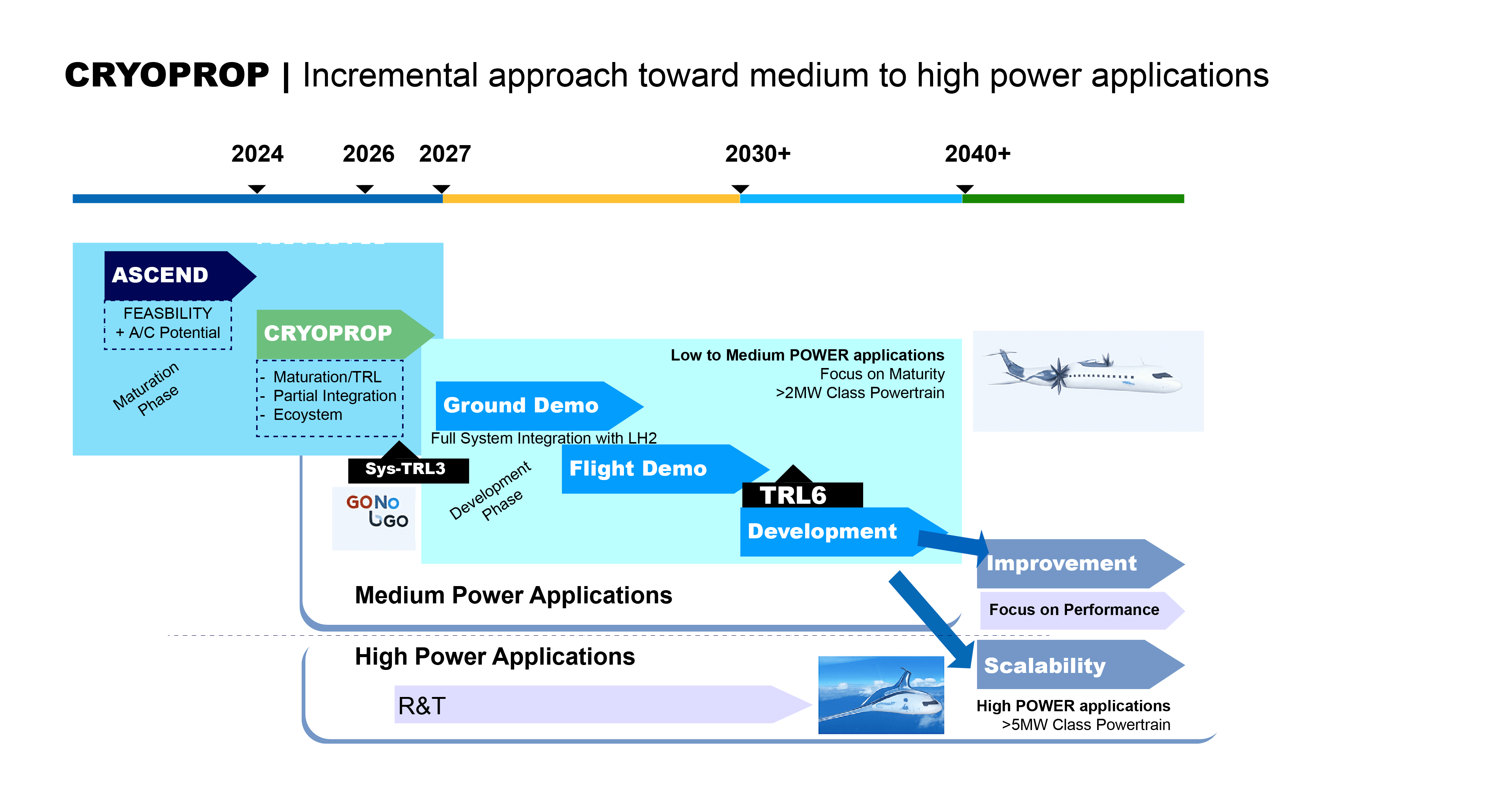The electric motors used to power prototype hydrogen-electric aircraft today are heavy, relatively inefficient and cannot scale to larger regional and single aisle aircraft, thus limiting market penetration. HyFlux’s superconducting motors are up to four times lighter and are more efficient thanks to utilising the liquid hydrogen fuel to cool the motor. This solution leads to lighter, more efficient aircraft, with zero greenhouse gas emissions.
It was interesting to hear the validation of the need to disrupt aviation propulsion from the largest aircraft Orignial equipment Manufacturers, Airbus and Embraer on the Webinar led by Mark Piling of FlightGlobal, who also invited MTU Aero Engines, Pratt & Whitney.

Mark Piling asked today of Airbus‘ Frank Haselbach, ‘You've got two very smart engine companies, and yet Airbus is doing a lot of this propulsion work yourselves and I'm kind of thinking to myself, why we're going to why, you know, why are you doing that?’ And adding ‘but you're doing the hydrogen fuel cell development. yourselves aren't you?’
Frank responded ‘Yes, yes, we do. We are we have a we have a joint venture there on the one hand side and that is effectively just a means to get the electrical power and then of course you need the the the the motors, the the power management, the gearbox and propellers and all that sort of stuff. And clearly we're looking at all of these technology 'bricks' also the thermal management, all of this, and we were somebody just we looked at the calendar. To be fair Mark, if I look at the calendar, it's less than 10,000 days to 2050. It's 9795 today, just check that. So fundamentally, it is not much time. And we actually losing time by sort of sort of carefully going down this route. We've seen some of some companies which we really actually happy about thriving, you know, quite quite fast into this, with approaches where we feel we need to have a little bit more technology picks on the way so what we actually said is, well, let's start the process of Airbus. Look at this. It's effectively a different concept than a gas turbine. So you can actually sort of say, well, how do we integrate all of this? Can we actually urge you that we are inviting partners all the time, but we're very, very keen to sort of advanced technology. So at the end of the day, if you look at an overall hydrogen powered aircraft, you would most likely also have the secondary power for starting up the aircraft setting like a fuel cell or something like that, because you fundamentally wouldn't have in the back sitting in a pew which is running on day one doesn't make any sense. So So all of these things clearly actually get for us to say well as a as a huge target, which environment of actually getting new technologies in understanding them or celebrating them and if we're taking part in that, well, that's good. It's just generating pace. And that's what we want pace’
‘It's just generating pace. And that's what we want pace’ Frank Haselbach

‘I just like to also add here that that I see a lot of challenges for the hydrogen, one of them that was mentioned here is the ecosystem. So how we produce all the required hydrogen, and how we store all the hydrogen and how we will support all the infrastructure in the airport. So I'm really happy to hear that, in fact, Frank mentioned that the ecosystem needs to be invoked as well, in terms of the size of their plane, I do think in rare things that for bigger planes, the hydrogen, it's a very good opportunity for having the new future of sources of energy.’ Said Maurilio Albanese Novaes Jùnior, R&T Director added.

Vince Sidwell talked about the Pratt and Whitney approach, which is to take very similar and common technologies and demonstrate them across a range of different demo programs to make sure we mature this effectively, as quickly as we can. So let's start with the one on the left. That's called STEP tech. That's sustainable turbo electric powertrain technology. This is an experimental facility that's being created at the Raytheon technologies Research Center in East Hartford, Connecticut.
"It is a 'soup to nuts end' to end hybrid electric laboratory scale demonstration program. It's in the hundreds of kilowatt class now it's scalable up to the megawatt class, but as everything from the heat engine through motor generators through power electronics and control, electrical storage, through to aerodynamic devices that actually create thrust in a wind tunnel. And it's a way for us to to in a very accelerated way, understand how these entire hybrid electric systems systems work. We expect that to start running sometime in 2023. Moving to the middle is our regional turboprop demonstrator. This is a 50% hybrid, parallel hybrid electric configuration on a regional turboprop sized aircraft so it's half the thrust is from a heat engine half and thrust is from an electrical device. It's megawatt class, electrical device. And it's we're aiming at 30% efficiency improvement from that. And it ran for the first time on the ground in December and we expect it to fly in 2024." said Vince.
In wrapping up the main points;
- Gravimetric Energy Density is Key in the Future
- Batteries and Hydrogen have a place
- Large Electrical System, with high voltages requires more switching systems
- Building blocks need to move with pace
- Systems integration is the real opportunity, Thermal, Electrical and Aerodynamic

We need to consider the non-CO2 effects, and the Water Enhanced Turbofan provides the solution to reduce NOx, however it's got a challenge with contrails - which need to be managed with the WET solution.
Dr Martin Stadlbauer, MTU Aeroengines suggests 'In order to increase fuel efficiency, we have added that water enhancement technology behind that gas turbine by using residual heat in a vaporizer which is placed directly into the exhaust stream, which turns liquid water into overheated steam. A subsequent condenser is then used to condensate that water from the exhaust steam forming water droplets of course, which are then being separated from the flow by a water recovery unit. During the condensation and water separation process, we expect soot particles being washed out and filtered out. And furthermore, we can influence the amount of gaseous water content in the exhaust. Both effects give us the opportunity to positively influence contract formation as well. The water is then being pumped back into the vaporizer and the steam from the vaporizer is fed through an additional steam turbine on the low spool shaft and then we inject it into the combustion chamber reducing NOx emissions by at least 80% and closing the water loop that technology already has been shown and proven in stationary gas turbines already. That concept will be applicable to short medium and long range flights of course, and therefore it covers almost all the aviation sectors climate impact, which is being generated in those sectors. We are as we already mentioned, working together with Pratt and Whitney with Collins aerospace, GKN Aerospace Engines, Airbus of course, and university and research institutes within that clean aviation projects which are SWITCH stands for sustainable water injected turbofan comprising hybrid electrics and that's that's the technology where we bring wet technology and hybridisation technology from Pratt and Whitney together into one concept, and they're hoping for synergies which we can harvest there as well.'
Summarising Frank said, 'So clearly, we have we spoke about disruptive propulsion here today. Clearly, there's a lot of other stuff which is happening in the in the system we're looking at Wings we're looking at materials, we're looking at all sorts of stuff, which will drive, let's say, more efficient aircraft. So that's absolutely clear. But if we look at the propulsion concepts, and I think it was very well set by by the other sort of panelists here, they're getting more and more important that they're integrated within the aircraft. And that's why I was focusing so much on this and this is why most likely why Embraer has focused so much on this because if you do an aircraft, that you can't just go and say, no, I want this engine you have to sort of if you really want to have another 10-20-30% step change in fuel efficiency, you have to do far more. And as you're changing energy carriers, and and a lot of other questions in there. It just gets a completely different feast. And that's why we're doing all of this now together in order to be ready for the middle of next decade. It's still Yes, it's it's still some years away, but as we know, it's nice, especially in 10, seven days to 2050. So we have to get going.'
'You have more complexity and actually managing this and that needs to be lightweight, foolproof needs to work needs to be you know, sort of in good condition and make sense of all the system. So this is where all the integration challenge comes from.'
Adding 'If I look at certification, clearly, we are doing in the face of exploring we are in the face of actually getting the TRL level up we're actually going up and we're let's face it and hydrogen terminology we might be in the territory of tier level 2,3,4 In depending on where things are. So we are not there being product ready. So we're working together of course, then with the regulators will be understanding more, we will show and demonstrate how it is safe because clearly, safety is a is non negotiable and the product will always be the next product will always be as safe or safer than the one before. So you have to actually go down this this learning curve and take the regulator with you. And they will clearly will actually take the aircrew role in that process very, very serious and make sure that we are all together marching in the right direction. So I don't see any big challenges here. Technological technologically all that is doable.
But it will take time it will take effort it will take money and it will take a lot of people doing it in parallel, and that's what we're trying to push.'
#hydrogen #saf #batteries




